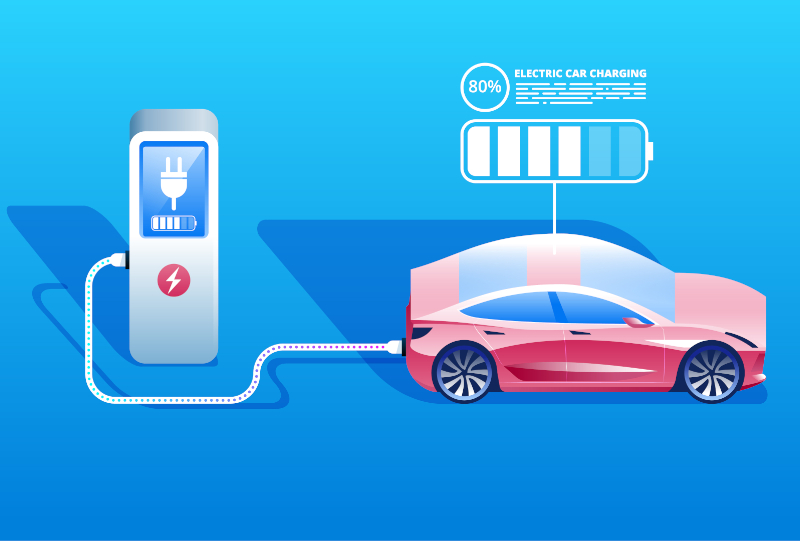We see many media stuff that talks electric vehicles and eMobility, and we keep hearing many terms that some people wondering what they mean, in this article, we are going to list the most used terms in this new evolution of Elerctric Vehicles

Top Electric Vehicle Terms
Note: This post credit goes to:
e-Mobility
This abbreviation stands for “Electro mobility”, e-mobility is a general term for the development of electric-powered drivetrains designed to shift vehicle design away from the use of fossil fuels and carbon gas emissions.
EV
This abbreviation stands for “electric vehicle,” it refers to any kind of transportation that uses one or more electric motors powered a rechargeable battery for propulsion. It’s also called BEV, which stands for “Battery Electric Vehicle.”
Battery
An essential EV component, this is an electric storage unit in which chemical energy is converted into electricity and used as a source of power. Federal regulations require automakers to cover EV batteries under warranty for at least eight years or 100,000 miles (whichever comes first). See also Lithium-Ion Battery.
Charging
The process of replenishing an electric vehicle’s battery with electricity; this can either be accomplished at home via a standard wall outlet or a 220-volt line, or via a public or workplace-based charging station.
Horsepower
This is a measurement of an engine or motor’s maximum power output; an electric motor’s output can also be expressed in terms of kilowatts (kW) by multiplying motor power in kilowatts by 1.34
Kilowatt
A measurement of electrical power, usually abbreviated as “kW.” When used to express an electric motor’s maximum output, this is roughly equivalent to 1.34 horsepower.
KWH
Stands for "kilowatts per hour," this is a measurement of electricity that’s equivalent to the amount of energy expended in one hour by one kilowatt of power. An EV’s battery capacity is expressed in terms of kWh. The Environmental Protection Agency uses the number of kilowatts per hour needed to run a vehicle for 100 miles (shortened to “kWh/100 mi”) to express an EV’s energy consumption.
Level 1 Charging
The slowest way to charge an electric vehicle, Level 1 charging uses a standard 110-volt wall outlet. Depending on the model it may take between 8-24 hours to fully replenish a drained battery.
Level 2 Charging
Level 2 charging, accomplished via a dedicated 240-volt electric circuit like those used for large electric appliances, roughly slashes charging time in half over Level 1 charging. You can have a Level 2 unit installed by a professional electrician at home, and it’s the type of charging used most often in public and workplace charging stations.
Level 3 Charging or DC Charging or Fast Charging
This is the quickest way to replenish an EV’s battery, though it’s limited to what is still a relative handful of public charging stations. Also called DC Fast Charging, it’s able to bring a depleted battery up to an 80% charge in around a half hour. If you’re taking an extended road with an EV, you’ll want to plan the route around the availability of Level 3 pubic charging stations.
Lithium-Ion Battery
This is a type of high-energy rechargeable battery, used in EVs and other products like laptop computers, that leverages lithium ions as a key component of its electrochemistry.
Range
The number of miles an EV can travel before the battery becomes fully depleted.
Range Anxiety
Range anxiety is the fear that a vehicle has insufficient range to reach its destination and would thus strand the vehicle's occupants. The term, which is primarily used in reference to battery electric vehicles (BEVs), is considered to be one of the major barriers to large scale adoption of all-electric cars.
Regenerative Braking
A system used in EVs (and hybrid-powered cars) that recovers energy otherwise lost during deceleration and braking and sends it back to the battery pack to help maintain a charge. Some EVs, like the Chevrolet Bolt EV and Nissan Leaf, can maximize the regenerative braking effect to slow down – and even bring the vehicle to a stop – without using the brakes. This is commonly called “one pedal” driving.
REX
Also called a “range-extended electric vehicle,” this refers to an EV with a small gasoline engine that kicks in to run a generator that, in turn, operates the motor once the battery becomes depleted. At that point the vehicle’s operating range is limited only by the amount of gas in the tank. This effectively eliminates worry over being stranded at the side of the road with a dead battery, which is often called “range anxiety.” The BMW i3 is available as both a pure EV and a REX.
SOH
Short for State of Health. Tt refers to the meter on an EV’s instrument panel that displays the current battery level as a percentage.
ZEF
This abbreviation stands for “zero emissions vehicle,” which means it produces no tailpipe emissions. All pure electric vehicles are of the ZEV variety.